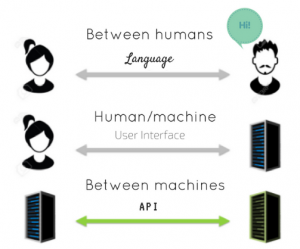If you plan to implement an energy management system in your organisation to meet your energy efficiency and sustainability goals, it would make sense to carry out a prior analysis of the current situation of your buildings and facilities.
In this article, we analyse how to implement an Energy Management System in your organisation to guide your choice and avoid surprises during the process:
Discover the 4 key points to consider:
1. Why should you implement an Energy Management System in your Buildings?
The most obvious answer to this question is to save energy and reduce costs. And of course, this is usually the primary objective for all decision-makers when they decide to implement an energy management system in their organisations.
But did you know that with an Energy Management System, you can achieve much more than that?
Most energy efficiency experts go beyond savings goals, they have a more sustainable and longer-term vision of what they can achieve in their organisations:
- Reduce their carbon footprint,
- Achieving climate neutrality in their organisation,
- Digitise the operational processes of their energy management teams, and increase their productivity,
- Provide their customers with more added-value services.
In your case, what is the purpose of implementing an Energy Management System in your company? Do you apply the SMART methodology to define your objectives?
This methodology of defining objectives can be applied to any type of project, but sometimes we don’t know how to do it in Energy Efficiency projects.
It is very simple. When defining your objectives you must check that each of them is SPECIFIC, MEASURABLE, ACHIEVABLE, REALISTIC and TIME-BOUND. As soon as they met these 4 criteria, you are working with SMART objectives.
So, depending on the objectives that you want to achieve in implementing an EMS, you should check that the chosen EMS fulfils all the needed requirements and in this way discard the systems that don’t.
2. Are there Submetering Systems or Digital Meters in your Buildings and Facilities
Let us now review and analyse your organisation’s equipment.
At this point, you should analyse whether your buildings already have energy submetering systems, more commonly known as digital meters.
It is really important to keep that in mind. Submetering will allow the energy management system to know the consumption profile of your installations and buildings, as well as allow it to make reliable predictions of future energy consumption.
On the other hand, the data sent by the submeters to the BMS will provide immediate information for real-time energy analysis. This allows you to detect and correct problems before they become more costly.
In addition, being able to perform a real-time energy analysis with your BMS will allow you to identify anomalies such as energy consumption levels higher than average values, and poor power factor values, among others.
If in your case, digital meters have not been installed in your buildings yet, or you would need to install new ones, you should consider these two hardware-based (energy meters) approaches to choosing your energy management software provider:
- Hardware Neutrality: it means that the software can interface with any meters or that it is very easy to integrate.
- Closed system: you will either need to conform with the hardware that the platform provider has chosen, or pay consultants to work on external software developments allowing data collection and data dumping. In many cases, you will be paying a high cost for the only compatible hardware.
Of course, the idea is to work with a software provider that offers a “hardware-neutral platform”.
This is the case of Spacewell Energy (Dexma)’s EMS, which integrates a few hundred devices. In fact, we consider it as “neutral”, because if your device can’t be found on our platform, we can create a new integration without any problem. In fact, any hardware can be virtually integrated into our energy analysis platform.
3. Do your Buildings already have a BMS or BAS already installed?
When we talk about whether your buildings or facilities have a BMS (Building Management System), also known as BAS, we are referring to an automation system that manages HVAC, electrical, lighting, fire, security and lifts systems, among others.
Let’s now clarify a common misconception about BMS/BAS and EMS. Facility managers and energy professionals use these terms interchangeably but they are different.
Sometimes this leads to believe that the implemented BAS building can manage the building energy consumption alone. But using a system that has not been developed for this purpose will result in missed opportunities for cost savings and reduction of energy consumption.
This infographic will help you to understand the difference between the two systems:
Apart from that consideration, if you plan to implement an Energy Management System in the organisation, you should know the fact that BAS and EMS have different purpose is not a bad thing. On the contrary, although these systems have different functions, they complement each other.
They allow you to control the operational energy use of the building thanks to your BAS or BMS.
Thanks to real-time energy consumption analysis provided by the BMS, you can verify that all the systems are properly functioning and detect anomalies to identify problems in the maintenance of your facilities.
In other words, you should ideally be able to integrate this existing system with the energy management system you want to implement, to carry out what we call “Intelligent Energy Control” in your buildings.
So, it is essential to investigate during the planning phase of your project whether the BAS or BMS that your buildings use is compatible with the EMS you want to implement.
If you already have building management systems in place in your organisation, or you planned to implement them, opting for 100% compatible energy management systems such as the Spacewell Energy (Dexma) platform will make your job much easier.
And how can we ensure that our Spacewell Energy (Dexma) smart energy management platform is compatible with your BMS?
That’s because its technology is one of the few to offer an open API for energy analysis and other data. In other words, Spacewell Energy (Dexma) software executes a code that allows other platforms (in this case BMS, BAS or SCADA) to talk to each other. So you can even connect an ERP to the Spacwell Energy (Dexma) Platform.
Other benefits of implementing your BMS with an SGE
As I said before, integrating your building control systems such as BAS or BMS with a BMS would allow you to set up an “Intelligent Energy Control” strategy.
This concept goes far beyond simply controlling the energy consumption of your buildings and automation.
Thanks to new technologies such as artificial intelligence, big data and machine learning, today advanced intelligence tools monitor, in real-time, the energy behaviour of the building, allowing you to use techniques such as:
- Energy demand management or Active Demand Response in your building portfolio.
The aim of this management methodology is to adapt the energy consumption needs of a building in real-time to make them respond to requests from the electricity grid, causing the buildings connected to it to release part of their power consumption.
This would allow balancing supply and demand of the grid, and save energy.
For example, many projects such as RESPOND are already developing this technology to enable even residential buildings to take advantage of this energy-saving technique.
- Predictive maintenance, which involves building managers’proactivity, and teamwork with energy managers.
This methodology is based on measuring and monitoring the operational state of the installations, giving recommendations that will result in large savings.
These techniques can be applied and combined with your BMS and the Spacewell Energy (Dexma) platform, whose Dexma Optimise tool provides you with a list of anomalies and recommendations.
- Gamification, on which your energy efficiency plan can be based to change the behavioural patterns of building users and increase energy savings.
Concretely, gamification consists on using game dynamics and competition in a group of users to encourage the use of technology and the adoption of new habits. For example, pioneering projects such as FEEdBack, in which Spacewell Energy (Dexma) has participated, with which an energy saving App, has been developed by applying gamification.
4. What Investment Budget do you have for EMS implementation?
Although we have moved this issue to the end of the list, it is one of the most important things that you should analyse before implementing your Energy Management System and jumping in the deep.
The budget will be a determining factor in the final choice of an EMS, but you should not forget that it does not have to be decisive when choosing a specific EMS.
Now let’s imagine ourselves in the situation. Imagine that among your preferences in Energy Management Systems, there are a couple of options that fit perfectly with all the needs and requirements of the energy efficiency plan you have prepared for your buildings. But of course, when you start to crunch the numbers, your budget is too tight and even too low.
Do you have to automatically discard them? The answer is no.
When this happens, you might calculate the ROI of your energy efficiency project by taking into account the cost of implementing each of the preferred BMS. When calculating ROI, you may find that the investment is so profitable that it is more worthwhile to opt for one of these BMS because they will bring you more benefits than the other lower-cost ones.
If you have reached that stage, our downloadable template will help you to easily calculate the budget and ROI for your projects.
And now that you know the criteria you need to consider before implementing an energy management system, which EMS would be the ideal one for your company’s buildings?
Help yourself with this free downloadable guide, and choose the best Energy Management Software for your project.





